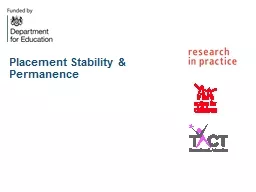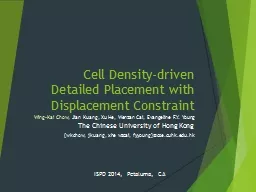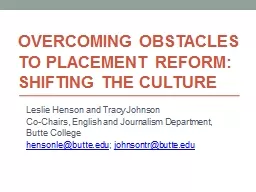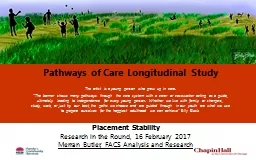PPT-Placement Stability & Permanence
Author : myesha-ticknor | Published Date : 2016-06-15
What is Permanence a sense of security continuity commitment and identity a secure stable and loving family to support them through childhood and beyond Department
Presentation Embed Code
Download Presentation
Download Presentation The PPT/PDF document "Placement Stability & Permanence" is the property of its rightful owner. Permission is granted to download and print the materials on this website for personal, non-commercial use only, and to display it on your personal computer provided you do not modify the materials and that you retain all copyright notices contained in the materials. By downloading content from our website, you accept the terms of this agreement.
Placement Stability & Permanence: Transcript
Download Rules Of Document
"Placement Stability & Permanence"The content belongs to its owner. You may download and print it for personal use, without modification, and keep all copyright notices. By downloading, you agree to these terms.
Related Documents














